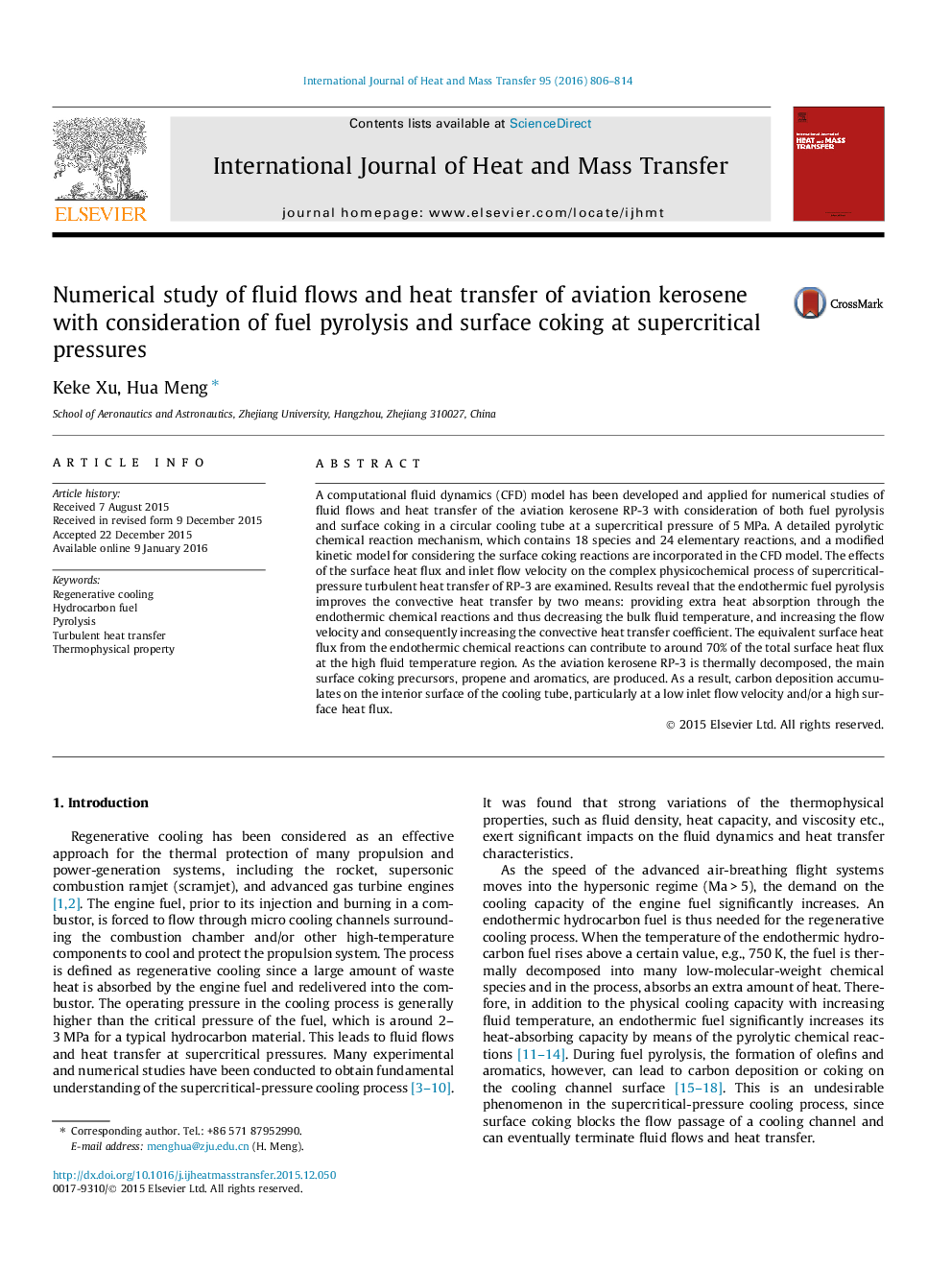| کد مقاله | کد نشریه | سال انتشار | مقاله انگلیسی | نسخه تمام متن |
|---|---|---|---|---|
| 656678 | 1458047 | 2016 | 9 صفحه PDF | دانلود رایگان |

• Model takes consideration of both fuel pyrolysis and surface coking reaction.
• Modified kinetic parameters of surface coking reaction from model validation.
• Endothermic fuel pyrolysis may contribute to 70% of total surface heat flux.
• Pyrolysis decreases fluid temperature and increases heat transfer coefficient.
• Surface coking reaction leads to carbon deposition on cooling tube surface.
A computational fluid dynamics (CFD) model has been developed and applied for numerical studies of fluid flows and heat transfer of the aviation kerosene RP-3 with consideration of both fuel pyrolysis and surface coking in a circular cooling tube at a supercritical pressure of 5 MPa. A detailed pyrolytic chemical reaction mechanism, which contains 18 species and 24 elementary reactions, and a modified kinetic model for considering the surface coking reactions are incorporated in the CFD model. The effects of the surface heat flux and inlet flow velocity on the complex physicochemical process of supercritical-pressure turbulent heat transfer of RP-3 are examined. Results reveal that the endothermic fuel pyrolysis improves the convective heat transfer by two means: providing extra heat absorption through the endothermic chemical reactions and thus decreasing the bulk fluid temperature, and increasing the flow velocity and consequently increasing the convective heat transfer coefficient. The equivalent surface heat flux from the endothermic chemical reactions can contribute to around 70% of the total surface heat flux at the high fluid temperature region. As the aviation kerosene RP-3 is thermally decomposed, the main surface coking precursors, propene and aromatics, are produced. As a result, carbon deposition accumulates on the interior surface of the cooling tube, particularly at a low inlet flow velocity and/or a high surface heat flux.
Journal: International Journal of Heat and Mass Transfer - Volume 95, April 2016, Pages 806–814